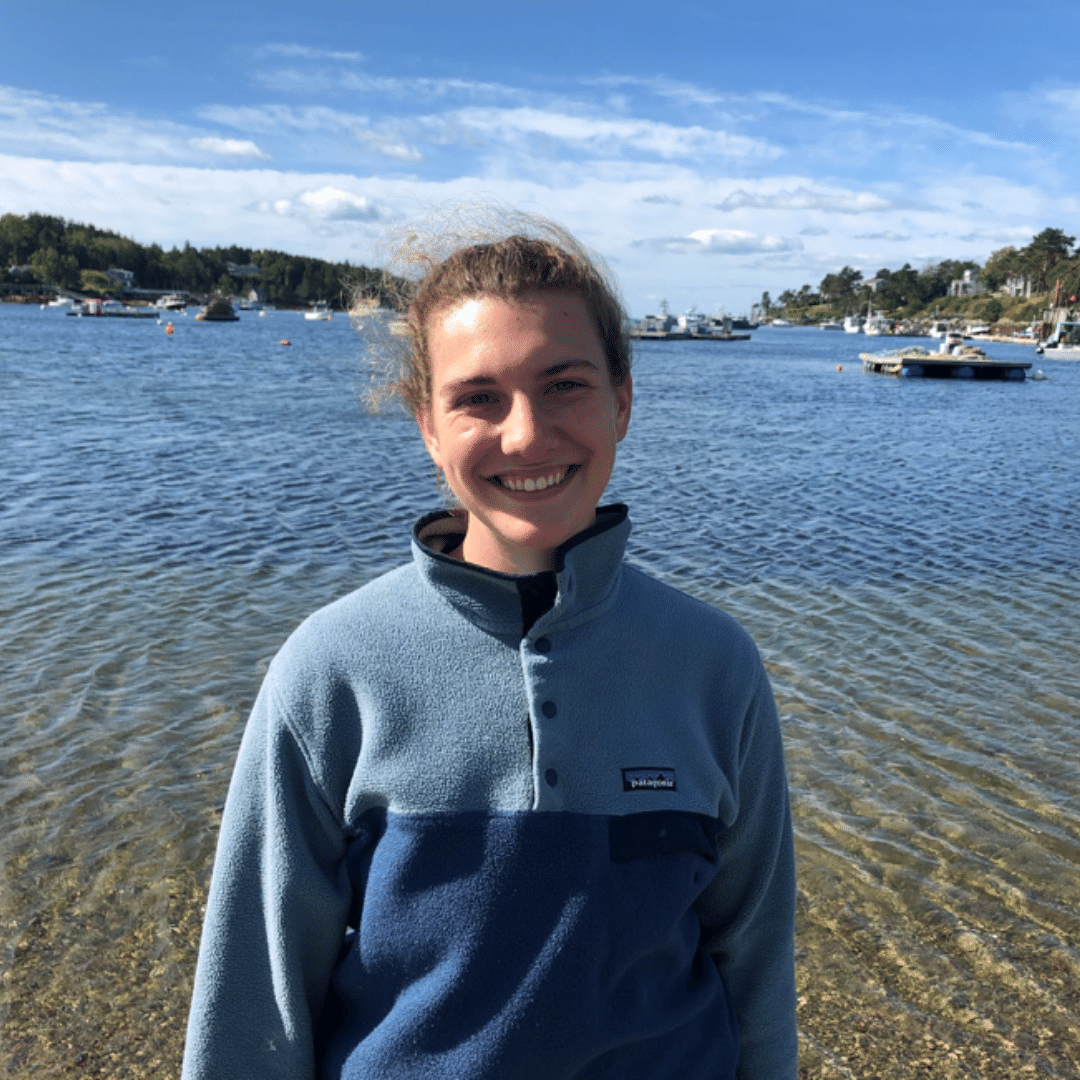
Meet Maine-eDNA: Sydney Greenlee, Graduate Research Assistant
by Jane Horovitz, Maine EPSCoR Student Writer
Sydney Greenlee, who is originally from Chantilly, Virginia, knew she wanted to be a marine biologist since the age of two, but she never really saw herself as a molecular ecologist. That is, until she did a REU (research undergraduate experience) with Pete Countway at Bigelow Laboratory for Ocean Sciences during her undergraduate career. From there, she found herself interested in understanding the often unseen processes in the ocean in microbial and molecular biology.
After graduating from Colby College in January with a degree in biology and environmental science, Maine EPSCoR’s Maine Environmental DNA (Maine-eDNA) program was a natural next step for Greenlee. Now she is pursuing her Ph.D. in Marine Sciences at the University of Maine with her undergraduate mentor, Countway, as well as Damian Brady, a UMaine faculty member at the Darling Marine Center, and continuing her work with eDNA.
Greenlee has worked with Countway for two years through Colby’s partnership with Bigelow that aims to provide undergraduate students with hands-on research experience. She got her start with eDNA working with invasive lacy bryozoan that often form large colonies that cover kelp. She collected samples of bryozoans from kelp in different sites throughout the state, extracted their DNA, and developed PCR primers for the bryozoans. Then Greenlee would use those primers on water samples from each site to determine if the bryozoans’ DNA could be found in the water.
“I love the way that eDNA can be used to answer so many different questions, but it’s also pretty robust as well,” Greenlee says. “It’s pretty cool to be on the cutting edge of this technique and of marine science.”
Greenlee has always been interested in how microbiomes, which include bacteria, algae, fungus and other things, function and interact with host organisms and their environment. For instance, certain algae have bacteria that live on them or in between their tissues that help them produce certain chemicals or metabolize their food. She believes that this piece of the puzzle could be important in understanding harmful algae blooms, which is what Greenlee is primarily studying with Maine-eDNA. She hopes to investigate and develop eDNA techniques to make harmful algae blooms in the Gulf of Maine easier to study. This summer, she spent time reading and researching to find direction in her project. One of the interesting things she found is that some harmful algae species only produce toxins when there’s an association with certain species of bacteria.
“Fisheries are pretty integral to Maine’s economy and finding ways to help predict and mitigate the loss of shellfish or events like shellfish poisonings would be really cool,” Greenlee explained. “Most science isn’t big discoveries, it’s little steps that combine to become a big discovery, and so anything I can contribute to [understanding Maine’s fisheries] would be really exciting.”
When Greenlee isn’t in the lab or conducting fieldwork for her Ph.D., she enjoys spending time exploring Maine, rock climbing, kayaking, and skiing. She even won an international ax throwing competition when she was on the Colby Lumberjack Team.
